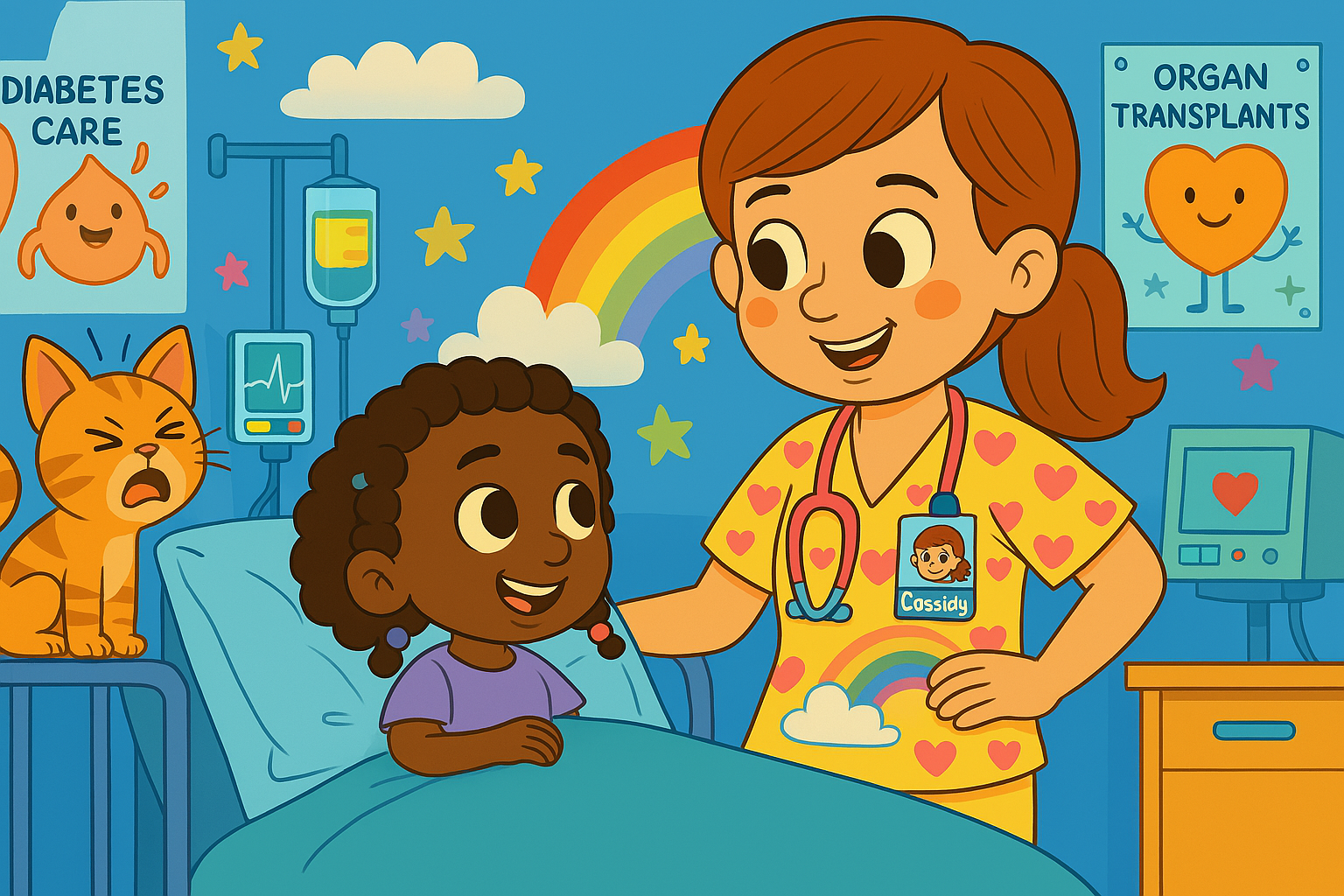Dexcom G6 App Available In Spanish
From Dexcom Press Release
Diabetes disproportionately impacts Latinos, and as of 2022, it is estimated that 11.8% of U.S. Latino adults have diagnosed diabetes. Furthermore, the CDC estimates that U.S. Latino adults have more than a 50% chance of developing Type 2 diabetes, with a greater risk of complication.
“With a myriad of studies that point to language barriers in healthcare leading to miscommunication between patients and healthcare providers and a decrease in quality of care and patient safety, it’s important to provide access to diabetes information in a patient’s preferred language to improve health outcomes,” said Ana-Mari Calleja Carr, district business manager at Dexcom representing the South Florida region. “Launching the Dexcom G6 app in Spanish is a positive step toward improving health equity for individuals with diabetes who primarily speak Spanish.”
To access the Dexcom G6 mobile app in Spanish, users need to install the latest version of the app and set their compatible iOS (v1.10.1) or Android (v1.10.0) smartphone* language to Spanish (any dialect/region). The app will automatically display in Spanish as long as the phone language is set to Spanish.
“Being able to offer this powerful CGM technology to my Spanish-speaking patients in their preferred language can help them better understand their diabetes and be more proactive about managing their health,” said Dr. Rocio Harbison, MD, FACE, an endocrinologist who treats a large Spanish-speaking population. “CGM technology is one of the most powerful tools available for managing diabetes and this new development from Dexcom will help improve access for Spanish-speaking people who often have to navigate their health with limited Spanish-language tools.”
Dexcom G6 uses a small, wearable sensor and transmitter to continuously measure and send glucose levels wirelessly to a compatible smart device* or receiver, giving patients real-time glucose data without the need to prick their finger.† The system also offers customizable alerts and alarms to help avoid potentially dangerous low and high blood sugar events.
“It’s great to see that Dexcom invested in developing a Spanish-language app for patients,” said Siena Ruelas, a professional soccer player and Dexcom Warrior who has Type 1 diabetes. “This offering will help remove a significant barrier to accessing important glucose information and improve one’s ability to make critical health decisions.”
The Dexcom Follow app is not immediately available in Spanish but the functionality will be added in a future product update. For more information in Spanish on Dexcom G6, please visit Dexcom.com/ayuda.
La diabetes afecta desproporcionadamente a los latinos, y desde el 2022, se estima que el 11.8% de los adultos latinos en los Estados Unidos han sido diagnosticados con diabetes.1 Además, los Centros para el Control y la Prevención de Enfermedades estiman que los adultos latinos en EE.UU. tienen más de un 50% de probabilidad de desarrollar diabetes tipo 2 con un mayor riesgo de complicaciones.2
"Debido a que un gran número de estudios indican que las barreras del idioma llevan a la falta de comunicación entre los pacientes y los profesionales de la salud3 - y disminuyen la calidad de la atención media y la seguridad del paciente - es importante proporcionar acceso a información sobre la diabetes en el idioma preferido del paciente para mejorar los resultados de salud," dijo Ana-Mari Calleja Carr, gerente de negocios del distrito en Dexcom que representa a la región del sur de la Florida. "El lanzamiento de la aplicación Dexcom G6 en español es un gran paso hacia la mejora de la equidad en salud para las personas con diabetes que hablan español."
Para acceder la aplicación móvil Dexcom G6 en español, los usuarios deben instalar la última versión de la aplicación y establecer el idioma de su teléfono inteligente iOS (v1.10.1) o Android (v1.10.1) a español (cualquier dialecto/región). La aplicación se mostrará automáticamente en español siempre que el idioma del teléfono esté configurado a español.
"Ofrecer esta poderosa tecnología de monitoreo continuo de glucosa a mis pacientes de habla hispana les ayudará a entender su diabetes un poco mejor, ayudándoles a ser más proactivos en el manejo de su salud," dijo la Dra. Rocío Harbison, MD, FACE, endocrinóloga que trata a pacientes de habla hispana. "La tecnología MCG es una de las herramientas más poderosas disponibles para controlar la diabetes y este nuevo desarrollo de Dexcom ayudará a mejorar el acceso para las personas de habla hispana que a menudo tienen que navegar productos de salud con herramientas limitadas en español."
Dexcom G6 utiliza un pequeño sensor y transmisor portátil para medir y enviar continuamente los niveles de glucosa de forma inalámbrica a un dispositivo inteligente* o receptor compatible, proporcionando a los pacientes datos de glucosa en tiempo real sin la necesidad de pincharse el dedo.† El sistema también ofrece alertas y alarmas personalizables para ayudar a evitar eventos potencialmente peligrosos de bajo y alto nivel de azúcar en la sangre.
"Es genial ver que Dexcom invirtió en el desarrollo de una aplicación en español," dijo Siena Ruelas, jugadora de fútbol profesional y Dexcom Warrior con diabetes tipo 1. "Esta opción ayudará a eliminar una barrera significativa cuando se trata de acceder información importante sobre la glucosa, y mejorará la capacidad de tomar decisiones críticas sobre nuestra salud."
La aplicación Dexcom Follow no está disponible en español, pero la funcionalidad se agregará en una futura actualización del producto. Para obtener más información sobre Dexcom G6 en español, visite Dexcom.com/ayuda.
Divorce: Companion to Episode 708
Co-parenting through divorce presents a multitude of challenges. When your child has special needs, those issues are only amplified. As a family law attorney and mom to a T1D child, I see the intersection of these two worlds resulting in conflict which negatively impacts the child and the parent’s ability to effectively co-parent.
Through my interview on the Juicebox Podcast and the information provided in this post, I hope to provide some general information and tools that you can use to improve your co-parenting relationship and protect your child’s best interests in navigating some common issues.
The two critical components of a parenting agreement relate to decision making and parenting time.
Parenting Schedule.
If you are contemplating divorce, or in the process of divorce, it is crucial to include terms to your parenting agreement to provide for a parenting schedule in your child’s best interests. If the other parent does not wake to alarms, has not managed care, and your child is not old enough to take on that responsibility, it may not be appropriate for your co-parent to have overnight parenting time until he or she can demonstrate that they are up to the task. Some potential protections and obstacles to consider:
Supervised parenting time with a trusted care provider. Is it appropriate to require supervision by a third party who understands your child’s care until your co-parent can demonstrate a working knowledge?
Step ups to allow for increased time when the parent reaches certain milestones/demonstrates ability to provide care. If you are MDI, do they know your child’s ISF and your insulin to carb ratio? If using a pump, do they know how to change the pump, what to look for to determine whether a site is bad? Perhaps you want to consider re-education with a CDE?
Physical distance and managing supplies. Are you transporting everything for each exchange or will each parent have sufficient supplies at their respective home?
What communication tools will you use? Are you comfortable texting your co-parent or do you want something more formal like a co-parenting communication app, to not only communicate but log issues, have a shared calendar, etc.
Medical Decision Making.
If you have a child with T1D, you absolutely should have an entire section of your parenting plan which addresses this specifically. It should be treated differently than other medical decisions because it is both an extraordinary health condition, but an every day one as well.
Unless what you are agreeing to is unconscionable or otherwise not in your child’s best interests, Judges typically will not interfere and do not have strong preferences what the parties agree to in their parenting plans. Parents can include language about their respective goals and expectations related to your child’s care. You may want to consider the appointment of a Parenting Coordinator to act as an intermediary in disputes relative to your child’s care to avoid going to Court.
How to handle a parent who is not taking your child’s health seriously.
Co-parenting with any special medical need is difficult. However, other conditions may have periods of flare ups and remission, good days and bad days. Diabetes is constant and parents of T1D children don’t get a break. A common theme where issues surface involves one parent who has been the point person primarily responsible for the child’s care, and in the event of a divorce, the other parent is ill equipped to properly manage the child’s care.
First, this is why it is so crucial to set up safeguards in your parenting plan. However, if you are past this point (you were divorced prior to diagnosis or your parenting plan is not specific enough), a few things to consider:
One of the hardest realities to face is that there is nothing you can do to make the other parent care. You can force changes in behavior through court intervention, you can seek that they have less time with your child, but ultimately, they have to understand that their lack of care has a negative impact on their child’s health.
Mandatory Diabetes education? If you are seeing consistent issues with your co-parent, this is potential relief that you can seek from the Court.
Consult with a lawyer. If your child’s parent is not taking their condition seriously, this may provide the Court with a basis to modify the parenting schedule. Documenting issues in writing is crucial. Educating the Court is also essential. Most Judges do not have an understanding of the complexities of diabetes. Your lawyer should be prepared to cite medical journals about long terms impacts of diabetes, importance of maintaining a low A1C, etc.
Example of how to communicate and document:
Child is at Parent 1’s house and his BG levels are high, he is coming back to Parent 2’s house and you see that he was consistently running high, not bolusing appropriately, etc. If your co-parent brushes off your concerns, the next time it happens, carefully document the issues and put them in writing. Child was only in range X% of the time while in your care, his average BG was YYY, and we need to get on the same page regarding his care until such time as he can independently manage it.
After you have continued to address these issues in writing, document them for your lawyer and consult with him or her to determine next steps in seeking to modify your Agreement.
If your co-parent is not taking your child’s health seriously, it is both infuriating and heartbreaking. Try to keep your emotions in check and address the issue factually. When you are involved in an acrimonious divorce, tensions are high and both parents are on edge when communicating with the other. If you are able to keep your tone balance and remove accusations in favor of facts, it will help you communicate more effectively to achieve better results for your child.
Disclaimer. Nothing in article should be construed as legal advice; consult your attorney in your jurisdiction for any questions about your case.
On This day, January 11 1922: Insulin Was First Used to Treat Diabetes
On Jan. 11, 1922 fourteen-year-old Leonard Thompson was injected with a pancreatic extract prepared by Dr. Frederick Banting, and medical student, Charles Best.
Although his blood sugars went down a little, there was not a lot of change following Thompson’s initial injection, according to the University of Toronto’s heritage website.
But biochemist Bert Collip, who had been working with Banting and Best in a lab provided by the university’s head physiologist, Prof. J.J.R.. Macleod, developed a method to refine the extract and daily injections of this extract started Jan. 23. Improvement was immediate and remarkable. The boy’s blood sugar levels dropped to normal levels (Thompson would live another 13 years with daily injections of insulin, before dying of tuberculosis.)
It was not a cure but it was a monumental breakthrough in treatment for what had been an untreatable disease.
In March, 1922 a paper describing the case of Leonard Thompson, and six other patients the Banting and Best team treated with the refined extract, was published in the Canadian Medical Association Journal. It was the first official announcement of an extract developed to alleviate the symptoms of diabetes.
“A message of hope to sufferers from diabetes goes out authentically today from the medical research laboratories of the University of Toronto. The modesty of medical men and scientific investigators of the genuine brand attempts to minimize the results obtained. The harm of exaggeration and the injustice to both parents and research men in awakening false and premature hopes before the extracts can possibly be manufactured cannot be over-emphasized. But the fact remains that one of the most important discoveries in modern medical research has been made at the university here. It is not a cure for diabetes, its authors state. Within six months, however, their discovery will be used on a large scale, they hope, to prolong life quite considerably at least. There will be no secrecy, as from the beginning. The medical profession will know all the facts.”
The Toronto Daily Star broke the news a day before other outlets. The March 22, 1922 bold all-capital headline ran eight columns on the front page: “Toronto doctors on track of diabetes cure.” A subhead stated: “Discovery made at University of Toronto will be means of prolonging life considerably — F.G. Banting and C.H. Best pushed experiments all last summer.”
The Star referred to the Alliston-born Banting — who had won the Military Cross in 1916 for bravery in World War I — as being “strangely slow in speech” and “unassuming” but he also had “the reputation of coming across with the punch at the critical moment.”
Two months later, on May 22, 1922, Prof. Macleod delivered a paper on the U of T team’s findings to the American Association of Medical Physicists in Washington, D.C. and got a standing ovation. Macleod used the term “insulin” to describe the extract. According to the Canadian Encyclopedia, “in the eyes of most of the world,” this was considered the announcement of insulin.
The next year, on Oct. 26, 1923, the first Nobel prize awarded to Canadians was given to Banting and Macleod.
But the reaction of Banting and Macleod to the prize revealed a little of the testy relationship that had existed in the background between the two men.
According to an account on the website scienceheroes.com (similar to other published reports) Banting was furious that he was sharing the award with Macleod, not Best, and at first swore he “wouldn’t accept the award.” But friends persuaded him that it wouldn’t be smart to refuse the first Nobel for a Canadian (he remains the youngest Nobel Laureate in Physiology/Medicine). Instead, Banting announced he would split his share of the $40,000 monetary prize with Best.
read the story in it’s entirety at TheStar.com
CDC Adds Type 1 Diabetes to Covid-19 Vaccine List
The CDC (Centers for Disease Control and Prevention) maintains a list people eligible for the COVID-19 vaccine called, “People with Certain Medical Conditions” and they’ve just added people living with type 1 diabetes.
Read more here on the CDC website.






























